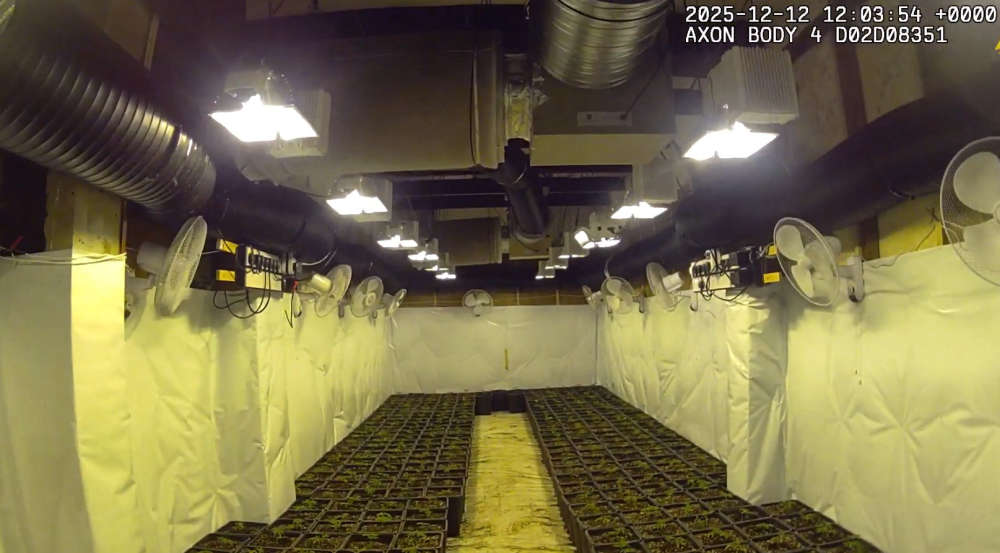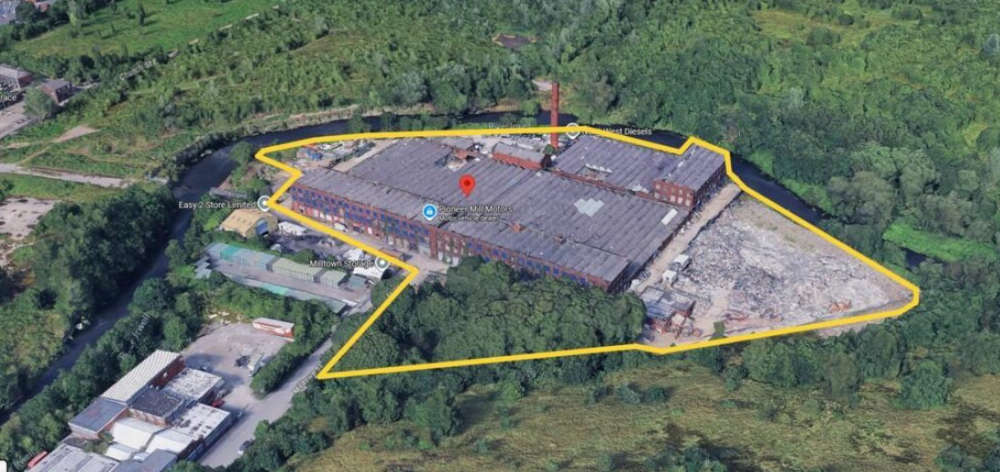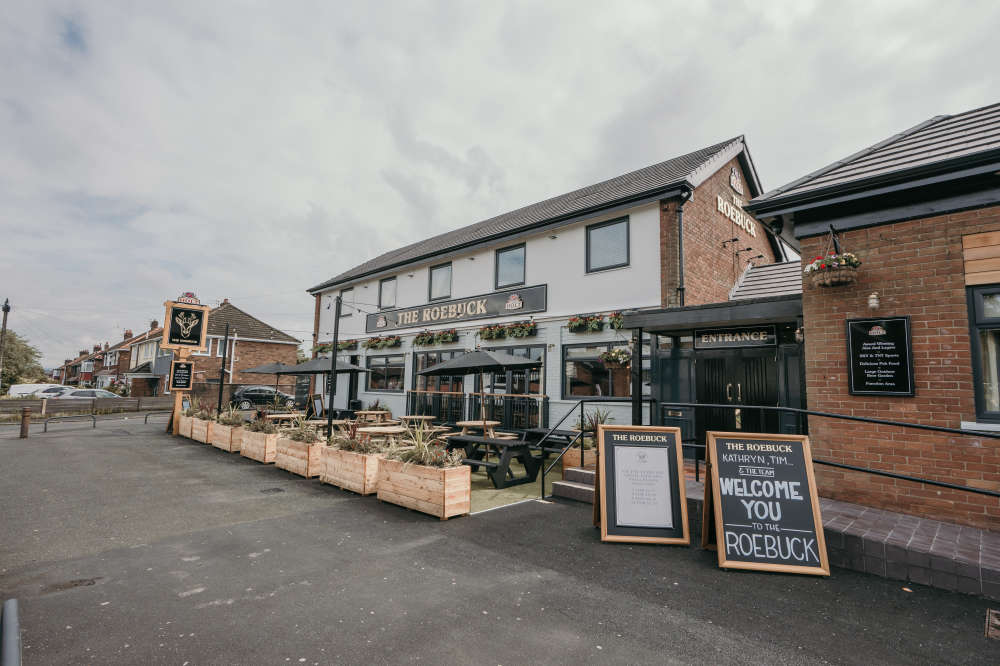
Scout Moor wind farm has dominated the skyline north of Manchester for two decades, now there is a plan to build 17 bigger, more powerful wind turbines on the cards.
Scout Moor wind farm has dominated the skyline north of Manchester for two decades, now there is a plan to build 17 bigger, more powerful wind turbines on the cards.
These new renewable energy generators would be up to 180m tall and far more powerful than the current turbines on Scout Moor, potentially making it the largest onshore wind farm in England.
This plan has been scaled back from the 21 turbines originally put forward by renewable energy developer Cubico Sustainable Investments, but it would still be capable of generating 100MW of clean electricity, powering around 100,000 homes per year.
Scout Moor II would be run separately to the neighbouring 26-turbine wind farm on the moorland between Rochdale, Edenfield, and Rawtenstall.
Plans for the expansion have been tabled a few times in the last 15 years by different developers, each time getting knocked back. There is one group that wants yet another knock back to happen.
The ‘Say NO to Scout Moor 2’ group is made up of activists from the community surrounding Scout Moor. Residents from Prickshaw, Norden, Rawtenstall, Edenfield as well as members of the Rooley Moor Neighbourhood Forum and Rossendale Civic Trust all make up this brigade.
They sat down with the Local Democracy Reporting Service in Norden Old Library to make their case for why they are so fervently against this plan. It is clear that this group shouldn’t be confused with NIMBYS (not in my back yarders) – a common negative stereotype associated with planning development objectors.
The team have scrutinised the planning documents to the nth degree, looked into the finances of this project and outlined a series of concerns that go beyond subjective points such as ‘we don’t like the look of the turbines’. Naturally, they don’t believe the existing turbines look good – so bigger, more powerful wind turbines are not on their wish lists.
Campaigners fear these new turbines – up to 180m including blade tip height – would be larger than Blackpool Tower and dominate the skyline. It was on visual impact that the last Scout Moor extension application, proposed by Scout Moor Wind Farm Expansion Limited, was severely scaled down by the planning inspector back in 2017.
The inspector, John Woolcock, recommended the Rossendale 14 wind turbines be refused and the two Rochdale turbines approved. However, those two turbines were never built.
This time around, one of the biggest concerns is the destruction of the peatland during the construction of the turbines. Workers would have to dig through metres of peat in order to create enough space to build the turbine bases.
Alan Billingsley, who has repeatedly spoken on behalf of the group, said: “The way they talk about digging up peat in clumps and moving it slowly and dropping it into a hole and leaving it there with water for a few days – then try and put it back.
“Once it’s damaged in any way it releases the carbon dioxide and it dies.”
So much peat loss is something Say NO to Scout Moor 2 feel is irreplaceable, despite Cubico’s promise of a major moorland restoration scheme.
In response, Cubico says that for every hectare of peatland affected by the wind farm, they will restore ten. That means 346 hectares of the most degraded moorland would be repaired, an area about three times the size of Manchester’s Heaton Park.
Cubico says this would be done through blocking historic drainage channels; replanting native mosses like sphagnum; and carefully reusing peat removed during construction. They have submitted a Moorland Restoration and Management Plan and an Outline Peat Management Plan to councils with further details.
Another question Alan had was around job creation – his group is sceptical as to how hundreds of jobs come from this project and benefit the local economy.
He added: “This will create jobs because people have to work on these turbines, if they can get them. But it’s a question of whether they are local.
“When they’re built no one will be working on them. There will be contractors coming in to do maintenance like with Scout Moor I.
“In terms of a local economy, I just don’t envision how it will help.”
According to Companies House, there are no employees at the existing Scout Moor wind farm – fueling speculation this newest wind farm would have a similar arrangement.
Responding to this, a Cubico spokesperson said: “During the roughly two-year construction phase, the project will support the equivalent of 210 full-time jobs – 60 of those local to Rossendale and Rochdale.
“These include direct site jobs and wider supply chain roles, from civil works and haulage to environmental surveying and equipment supply.
“After construction, the wind farm will be monitored and managed remotely, but we’ll still employ a local asset management team and contract technicians to carry out inspections and maintenance.
“The peatland restoration and land management alone will create jobs over the full 40-year life of the project.”
Finances and the sheer scale of this development is another key concern for campaigners. They believe Rochdale and Rossendale councils, who would have joint decision making powers on the matter, don’t have the resources to deal with such a massive application.
Steve Davison, a long-term campaigner within the group, believes Cubico are playing down the massive undertaking this project would be. He feels this location is just wrong.
He added: “It’s not up to us to find a better location for the wind turbines, it’s up to the developer.
“This application is on Rooley Moor, saying Scout Moor II makes it sound like they’re just stretching it out a little bit – like it’s a seamless extension.”
Cubico says the money will come from private investment by Ontario Teachers’ Pension Plan and PSP Investments – another Canadian pension investment company. They will be bankrolling the £140 million required to build the project.
About £50 million of this is planned to go directly into the local and regional economy, benefiting businesses in construction, engineering, transport, and other services.
Cubico has also proposed a long-term Community Wealth Fund, promising to deliver £20 million over the lifetime of the wind farm. It would offer a guaranteed £600,000 per year, linked to inflation, and based on £6,000 per MW of installed capacity.
The fund will be managed by a newly formed and independent Scout Moor Development Trust, chaired by a community liaison group made up of local representatives. Its purpose is to invest money back into the local community.
Steve questioned how this community wealth fund would be operated. He explained the cash will come from guaranteed government contracts called Contracts for Difference (CfD) auctions, whereby Cubico will be paid a minimum amount, called the Strike Price, for each MW hour (MWh) they produce.
If the market price for electricity falls below the strike price, the generator receives a payment from the CfD counterparty (usually a government-owned company) to make up the difference. But if the market price exceeds the strike price, the generator pays the difference back to the CfD counterparty.
So there is a possibility that, depending on the strike price, the community fund could be paid out from government/taxpayer money.
Previous promises about community funds didn’t materialise last time around, so the campaigners can be forgiven for being skeptical about the plans this time around.
The group have suggested the wind farm could only generate the electricity to power 100,000 homes if the turbines regularly worked to maximum capacity. The campaigners have questioned what the real number would be, if you factor in days of low wind.
They are also worried about the noise these turbines generate; what happens to the heritage and artefacts found in the area; as well as the matter of how they look.
Next stages
Cubico will now have to wait on the first round of planning permission to be approved. The developer says they are working closely with both Rossendale and Rochdale councils to ensure prompt validation of the applications and further information will be published in due course.
They say further public consultation and engagement will take place as part of the planning process, and the proposals may be updated based on feedback from both statutory consultees and local communities.
The developers need to generate data to see if the site is capable of hosting a wind farm of this scale. Now they have permission to erect a 91m meteorological mast to assess environmental conditions on the moorland.
Two years of wind data is required before construction of the main wind farm can begin. The mast would also help Cubico in securing funding for the wind farm, which they hope to build by 2030.
What Cubico say
A spokesperson for Cubico said: “Scout Moor II is a £200+ million, privately funded investment by Cubico that would deliver England’s first new onshore wind farm in over a decade.
“Generating enough homegrown electricity to power 100,000 homes annually, the project combines clean energy with one of the largest moorland restoration schemes in Northern England, repairing 346 hectares of degraded peatland.
“Alongside the environmental benefits, it will create over 200 construction jobs, contribute more than £1million per annum in business rates for 40 years, and deliver a £20 million Community Wealth Fund for Rossendale and Rochdale – a legacy of growth and local investment.”


 GMP cracks down on internal corruption in proactive investigation into officer misconduct
GMP cracks down on internal corruption in proactive investigation into officer misconduct
 Rochdale Council launches consultation on changes to Council Tax Support Scheme
Rochdale Council launches consultation on changes to Council Tax Support Scheme
 Live music debuts at Theatre Royal with acclaimed Manchester act
Live music debuts at Theatre Royal with acclaimed Manchester act
 71 dogs and puppies rescued from suspected illegal breeders in Bury
71 dogs and puppies rescued from suspected illegal breeders in Bury
 £1m cannabis farm dismantled by GMP officers in Heywood raid
£1m cannabis farm dismantled by GMP officers in Heywood raid
 AFC Supporters comic Poem written about Rochdale's last match called Muddy Hell!
AFC Supporters comic Poem written about Rochdale's last match called Muddy Hell!
 Bury GPs urge parents to vaccinate children against flu ahead of Christmas
Bury GPs urge parents to vaccinate children against flu ahead of Christmas
 Rochdale teenager clinches national racing title in debut car season
Rochdale teenager clinches national racing title in debut car season
 Mill complex left derelict by massive fire goes up for sale
Mill complex left derelict by massive fire goes up for sale
 Ellie Roebuck completes Joseph Holt training course at pub that shares her name
Ellie Roebuck completes Joseph Holt training course at pub that shares her name
 New canopies unveiled as Bury Market revamp takes major step forward
New canopies unveiled as Bury Market revamp takes major step forward
 Man charged with rape of two teenage girls in Bolton
Man charged with rape of two teenage girls in Bolton




Comments
Add a comment